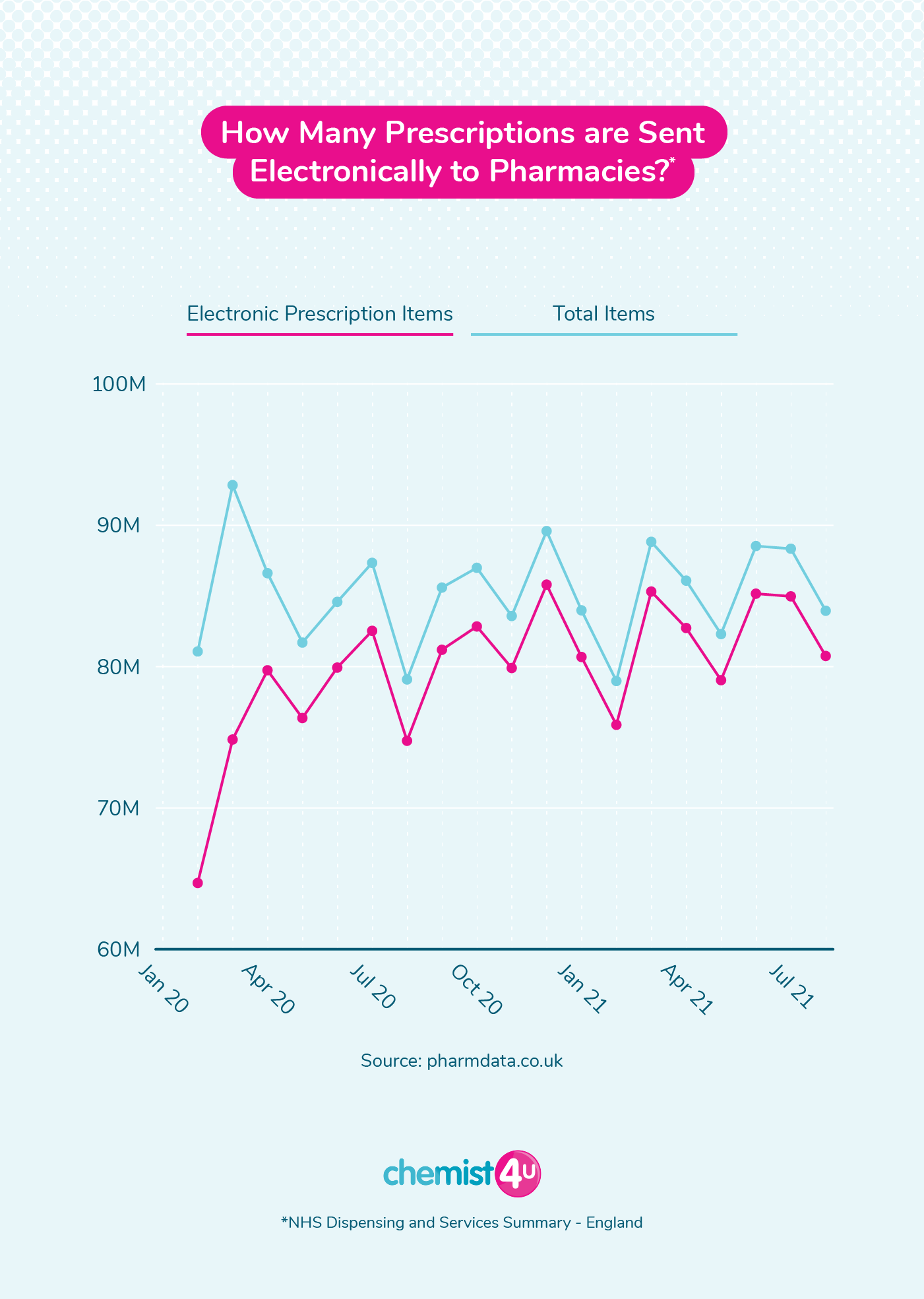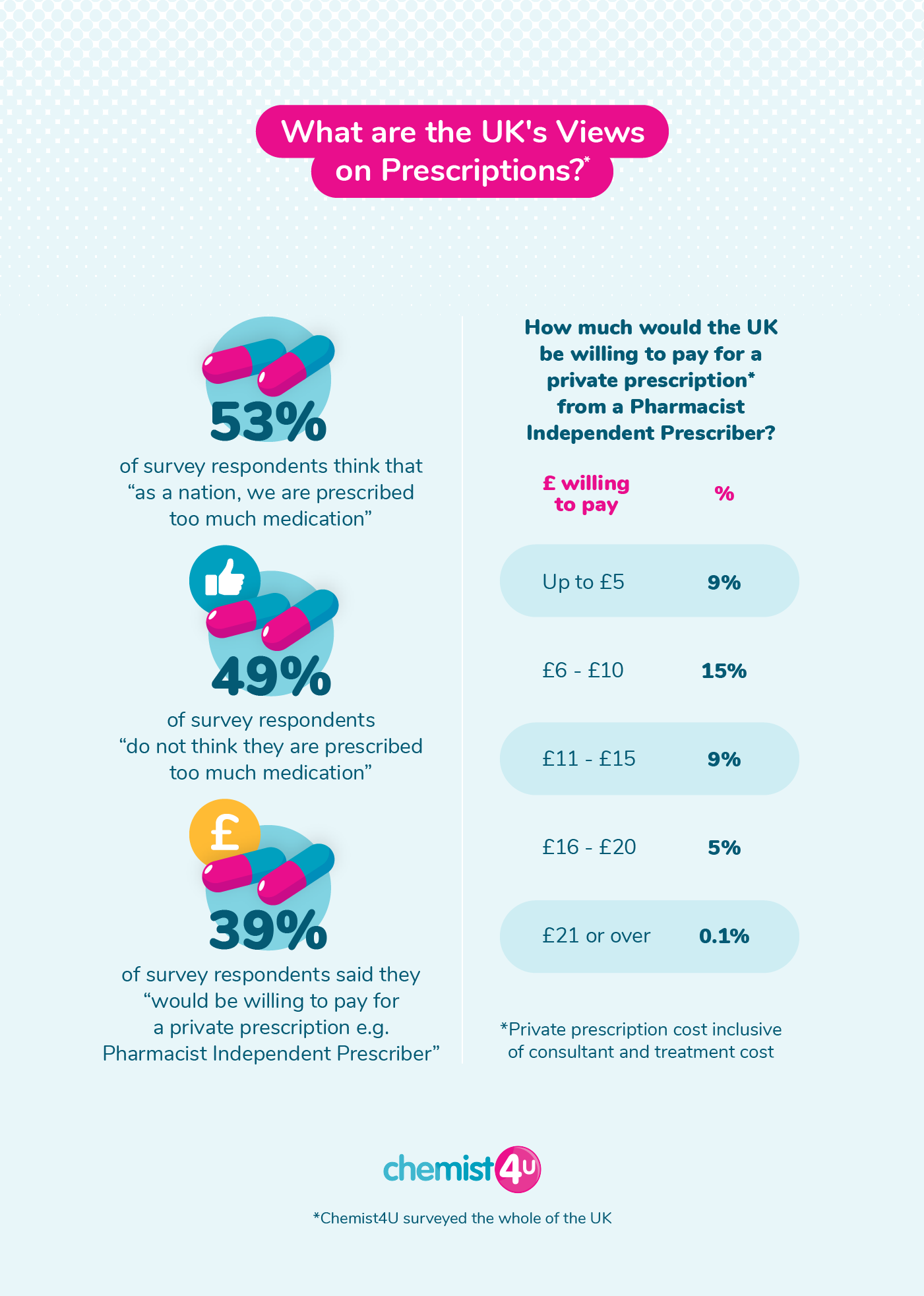
The State of England's Prescriptions 2021
Summary
Prescriptions are one of the types of medical treatment that we may expect to encounter the most throughout our lifetime. Whether for the long term, chronic conditions such as diabetes or asthma, a short term injury or illness, or as part of a contraceptive plan, prescription medications can effectively treat a wide range of health conditions.- Author Company: PharmiWeb.com
- Author Name: PW Editor
- Author Email: kelly.tipper@pharmiweb.com
- Author Telephone: +441344851506
The State of England's Prescriptions 2021
Prescriptions are one of the types of medical treatment that we may expect to encounter the most throughout our lifetime. Whether for the long term, chronic conditions such as diabetes or asthma, a short term injury or illness, or as part of a contraceptive plan, prescription medications can effectively treat a wide range of health conditions.
However, there’s much debate over how we use prescriptions as a nation, with the topic frequently discussed in the press. With discussions around the over-prescribing of medications and rising prescription costs currently a hot topic, any changes to the way we use prescriptions will have an effect on millions of people across the country.
With this in mind, we wanted to take a look at just how prescription medications are used in England and how things could change further over the years to come.
Our report looks at the most prescribed medication over the last five years across all regions in England, the future prediction on single item prescription costs in England as well as the views of the British public on prescriptions and medication.
The Levels of Prescribed Medication Over the Last Five Years
Using NHS England digital data, we’ve analysed the type and the number of different medications prescribed across each region in England.
Looking at the total number of prescriptions given in England over the last five years, there has been a considerable increase as the years have progressed. In 2015, around 1,073,128,330 prescriptions were given, with this number increasing by just over 20,692,230 for 2016. Prescriptions have risen year on year, until reaching 1,114,519,621 in 2020.
Based on figures so far for 2021, it’s likely that this year will increase again to 1,123,408,776 prescriptions given, but only time will tell.
Overall, the most prescribed medication from 2015 up until 2020 are Statin type drugs (Simvastatin, 2015 and Atorvastatin from 2016 to 2021) both are a form of medicine used to lower cholesterol and you will be prescribed these if you have been diagnosed as having high blood cholesterol. From 2015 to 2021 these types of statins have been prescribed 275,526,511 times nationally,
The table below shows the top 5 prescribed medications in totality from the years 2015 up until August 2021.

Which Prescribed Medications are the Most Prevalent in Different Regions Across England?
Our analysis has also uncovered which medication is the most frequently prescribed, for each region across England. While Simvastatin and Atorvastatin (Statins) are the most frequently prescribed medication for all regions, the remaining four prescriptions in the top five for each region vary.
After Statins, the second most prescribed medication in the North East and Yorkshire, North West, South East and South West is Omeprazole and Lansoprazole (both are types of medicine to reduce stomach acid and to treat indigestion, heartburn, acid reflux and gastroesophageal-reflux-disease (GORD).
In the East of England, Levothyroxine sodium, used to treat an underactive thyroid gland (hypothyroidism), is in second place for their region. In London, the second most prescribed drug is Amlodipine, used to treat high blood pressure (hypertension), and in the Midlands, the second highest prescribed item is another medicine that treats hypotension, Ramipril.
For the East of England and the Midlands, Omeprazole is the third most prescribed medication for their respective regions.
For London, the third highest prescribed drug is Metformin hydrochloride (a drug used to treat diabetes mellitus).
For the North West it’s Amlodipine and for the North East and Yorkshire, the South East and the South West, Levothyroxine sodium (a medicine for an underactive thyroid) is the third highest prescribed medication in these regions over the last year.

How Much Have Prescription Costs Risen in the Last 10 Years and How Much Are They Predicted to Rise?
From 1st April 2021, the cost for NHS prescriptions in England rose to £9.35 per prescription item, an increase of 2.19% from the 2020 prescription cost. Back in 2011, figures show that the average prescription cost for a single item was £7.40. As a result, this means that in a time span of ten years, the cost of a prescription has risen by 26.4% (a £1.95 increase per single item).
The chart below shows the average cost per single prescribed item for each year since 2011, where prescriptions charges have risen, on average, by 2.37% each year. According to this average increase, we can predict that by 2035, the average prescription charge for a single item in England could be £12.98.

The Rise of the Electronic Prescription Service (EPS)
The Electronic Prescription Service (EPS) sends electronic prescriptions from GP practices to your nominated pharmacy, eliminating the need to wait for prescriptions to be printed and taken to your local pharmacy.
Due to this quick turnaround time, your NHS prescription delivery can be with you within 48 hours; as a result, electronic prescriptions have been growing rapidly over recent years, and particularly since the start of the COVID-19 pandemic.
The chart below shows the number of EPS items within the total number of prescribed items from the NHS Dispensing and Services Summary - England, since February 2020:

What are the UK’s Views on Prescriptions?
We surveyed 2,000 people across the UK to uncover their views on prescriptions. 53% of survey respondents think that “as a nation, we are prescribed too much medication”. However, on an individual level, 49% of respondents disagreed with the statement that “I am prescribed too much medication”.

We also asked respondents how they feel about paying for prescriptions. In terms of prescription charges, 39% agreed with the statement “I would be willing to pay for a private prescription from a Pharmacist Independent Prescriber”.
We also asked respondents to select how much they would be willing to pay for one such private prescription.
Almost 1 in 10 (9%) of those surveyed said they’d be willing to pay up to £5, with the majority (15%) saying they’d be willing to pay between £6 - £10, including the current NHS prescription cost of £9.35 for a single item.
A further 1 in 10 (9%) said they’d be willing to pay between £11 - £15, 5% said they would be willing to pay between £16 - £20 and only 0.1% said they would be willing to pay over £21 for a private prescription.
Methodology
NHS England Prescription Data was used for prescription data in the UK. Annual prescription costs were collated from Gov.uk.
Electronic Prescriptions items and total prescribed items were sources from Pharmdata.
The survey was conducted by Censuswide with 2,000 general consumers (nat rep) aged 18+ between 03.11.21 to 05.11.21.
Censuswide abide by and employ members of the Market Research Society which is based on the ESOMAR principles.
To find out more go to https://www.chemist-4-u.com/prescriptions/the-state-of-englands-prescriptions/
